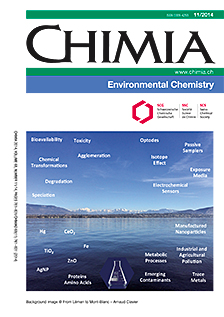Towards Mechanistic Understanding of Mercury Availability and Toxicity to Aquatic Primary Producers
DOI:
https://doi.org/10.2533/chimia.2014.799Keywords:
Bioavailability, Macrophytes, Methylmercury, Mercury, Phytoplankton, SpeciationAbstract
The present article reviews current knowledge and recent progress on the bioavailability and toxicity of mercury to aquatic primary producers. Mercury is a ubiquitous toxic trace element of global concern. At the base of the food web, primary producers are central for mercury incorporation into the food web. Here, the emphasis is on key, but still poorly understood, processes governing the interactions between mercury species and phytoplankton, and macrophytes, two representatives of primary producers. Mass transfer to biota surface, adsorption to cell wall, internalization and release from cells, as well as underlying toxicity mechanisms of both inorganic mercury and methylmercury are discussed critically. In addition, the intracellular distribution and transformation processes, their importance for mercury toxicity, species-sensitivity differences and trophic transfer are presented. The mini-review is illustrated with examples of our own research.Downloads
Published
2014-11-26
Issue
Section
Scientific Articles
License
Copyright (c) 2014 Swiss Chemical Society

This work is licensed under a Creative Commons Attribution-NonCommercial 4.0 International License.
How to Cite
[1]
P. Dranguet, R. Flück, N. Regier, C. Cosio, S. Le Faucheur, V. I. Slaveykova, Chimia 2014, 68, 799, DOI: 10.2533/chimia.2014.799.







